Someone recently said that 2020 requires a really sharp PR consultant to save its reputation. Do you agree? At Greengoat, we’ve have had an unusually good year despite the hurdles and now, it’s time to summarize the sustainability year of 2020.
The pandemic has given us access to the fine rooms
Breakfast seminars in Östermalm and in the Old Town in Stockholm have been replaced by Zoom and Teams meetings, the network meetings, seminars and all trainings as well. It is as if a whole new world has opened up for us who live out in the country. We are able to join in! In the same manner, we’ve suddenly gained access to people who are usually difficult to book for meetings in their living room – decision makers, purchasing managers, politicians and researchers among others – a welcome trend breaker for curious goats.
Cash is king
As usual, cash governs, and 2020 has shown this with clarity. When it starts to hurt, you simply try to do mitigate the pain. So, 2020 was the year when investors and funds began to phase out their fossil holdings, when banks started talking about higher borrowing costs for unsustainable investments, when the EU Green Deal and Taxonomy took shape and dizzying companies began to realize that Greenwashing no longer works. 2020 was the year when Preem had to withdraw its plans for its oil refinery in Lysekil and quickly started talking about renewable fuels instead, but interestingly also the year when Norway’s Supreme Court found it reasonable for oil companies to continue exploiting the Arctic. The last word is probably not uttered yet, but the decision to exit will probably not come from the court, but from the companies themselves as they realize that the cost will be too high. Cash is king.
Who is awake at night?
The vigilance in the sustainability issue has meant that the number of sustainability managers has increased exponentially in the past year; perhaps mostly because companies need someone to direct to when customers, banks, investors and potential new employees ask. Sometimes it is the HR manager who becomes the sustainability manager, sometimes the chief lawyer, the communications manager, the quality manager or even the IT manager. We can see that it’s often the person who stays awake at night and worries about the environment who becomes the sustainability manager, regardless of competence or resources. Let’s see how the appointment process develops during 2021.
What can I do to help?
A lot of people complain about a lot these days. Alarmers (without masks) are seriously complaining on TV that we in Sweden don’t require masks, others who are appalled by violence, December darkness and that all politicians categorically make the wrong decision, in all matters. Everyone else makes mistakes, all the time. The environmental movement, on the other hand, comes with a refreshing trend break in the valley of complaints. There are actually very little whining from the environmental movement. Instead, more and more people are asking the question: what can I do? How can I help? Individuals write letters to TV and papers and encourage them to dig deeper, broader, more fact-based when reporting about climate and the environment, they turn to politicians with constructive proposals and offer to help, they start companies, networks and collaborations to do something about it instead of complaining. Have you seen this trend yet? Watch out. It’s for real.
The industry takes the lead
When we started Greengoat, we figured that the public sector would take the lead with setting sustainability requirements in public procurements. We were wrong. It’s the industry that is leading the way and who dares to ask their suppliers to step up. It may have to do with a late wake-up call, in combination with traditional systems and we-do-what-we’ve-always-done, but the more municipalities and regions we talk to, the more difficult it seems to be. Public procurement in Sweden accounts for approximately SEK 700 billion a year and is thus a key to success if we want to mitigate the climate change. It takes courage, patience and ambition to set sustainability demands that don’t scare suppliers away. Happily, there are examples of such municipalities. In December, Fossil-Free Sweden and six municipalities (Helsingborg, Umeå, Uppsala, Växjö, Örebro and Östersund) announced that they will cooperate on the issue. Let us hope that other municipalities get inspiration and follow their example.
Paying for freedom to emit
One of our most read blog posts during the year was about climate compensation and the desire to pay for freedom to emit carbon dioxide. You have probably seen the trends – companies that claim to be climate neutral or even climate positive because they buy trees or solar cells elsewhere in the world. It is a complicated issue, because of course it is absolutely necessary to contribute to renewable energy and clean water in Africa, or tree plantations and solar cells in India, but it is simply not possible to translate such a contribution into being climate neutral. 23 researchers and experts have described it well. They received a harsh reply from companies that market themselves as climate-positive and then wrote a final remark that summarized the problem.
Hydrogen, a sigh of relief
We have been writing about hydrogen and fuel cells since 2014 when Sandvik, Linde (then Aga) and the Sandviken municipality began planning the country’s fourth hydrogen filling station in Sandviken. The progress has been slow in Sweden, to say the least. When we now count the number of stations, it adds up to five. Not impressive, but we believe that 2021 will be the year of hydrogen. With its potential in transport and storage of renewable energy, hydrogen should be a sigh of relief, an enabler.
With that, we wish good continuation!
PS. The picture is not of just any coffee cup; it’s Christmas gift that is now connected to a mobile phone where a slight push of a button decides how hot coffee you want. It has proven its worth by keeping 57 degrees Celsius straight through the writing of this blog post. Of course, coffee cups must also be connected – the digitalization trend has not diminished.

